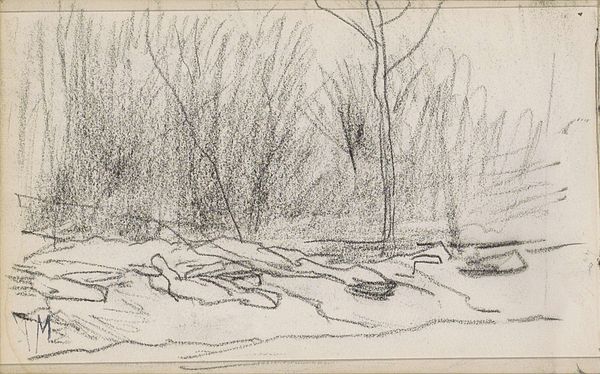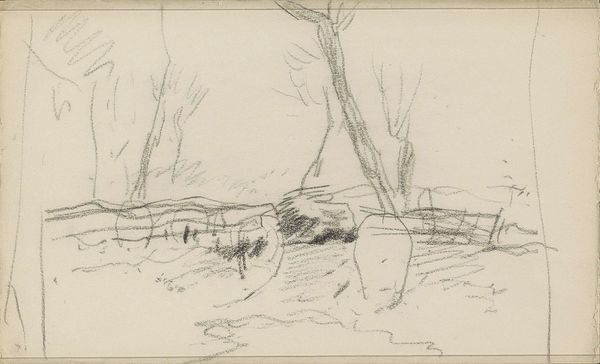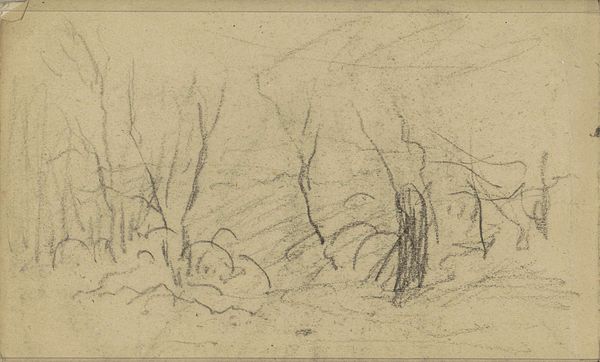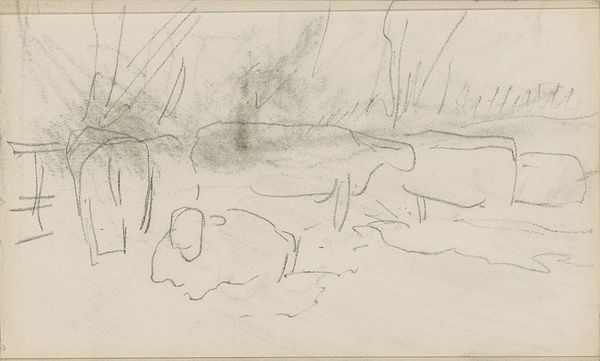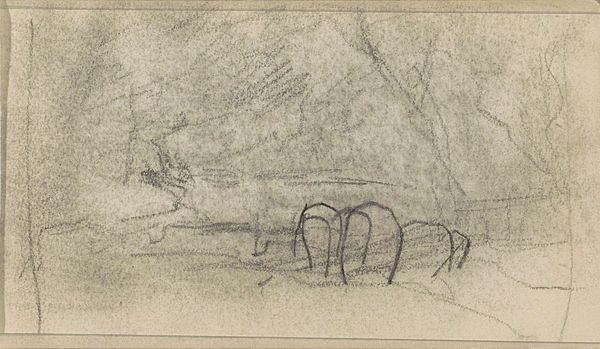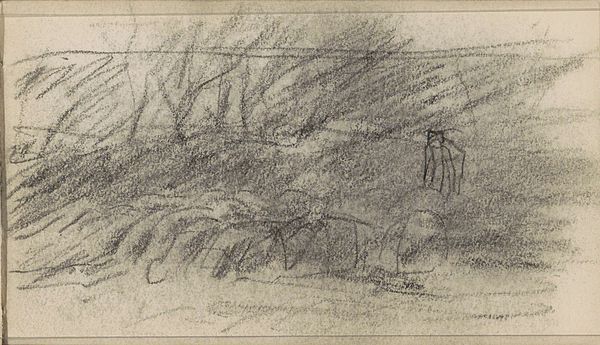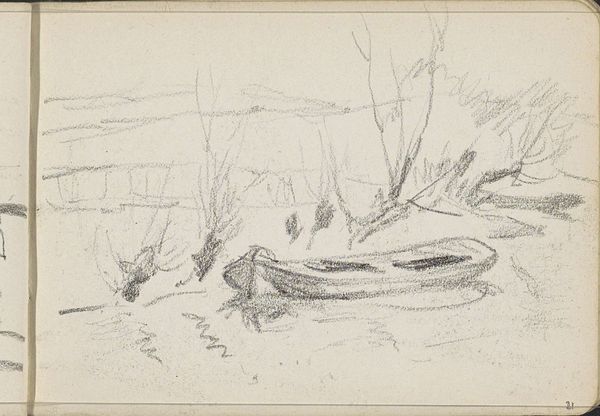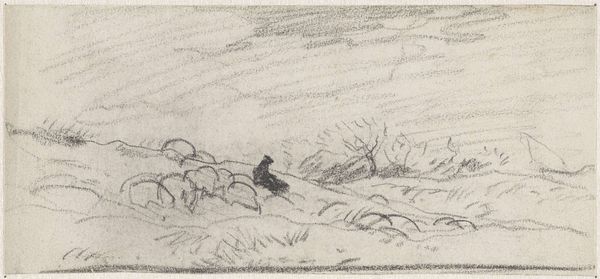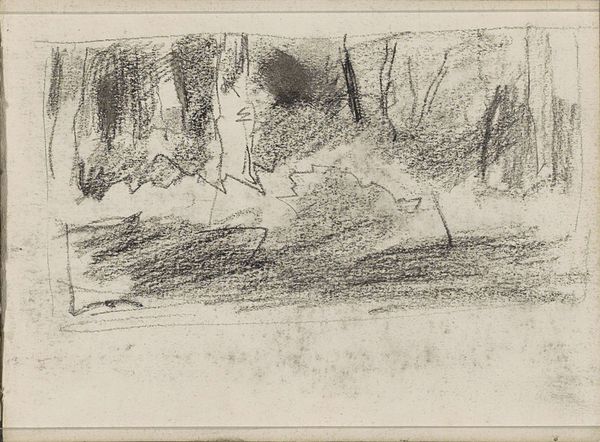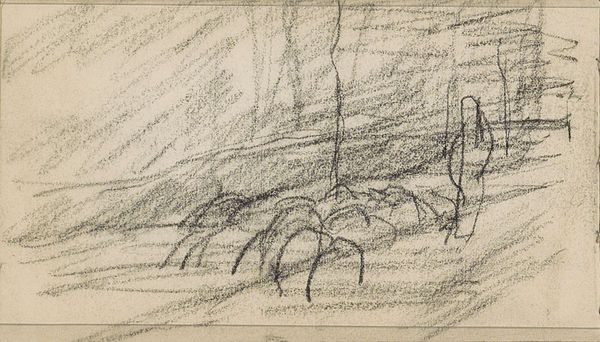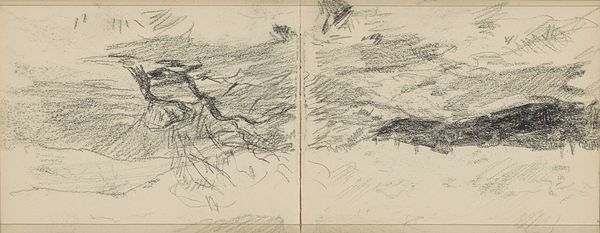
drawing, pencil, graphite
#
drawing
#
impressionism
#
pencil sketch
#
landscape
#
pencil
#
graphite
#
realism
Copyright: Rijks Museum: Open Domain
Curator: Here we have a piece by Anton Mauve, "Stukken hout bij een bosrand"— loosely translated, "Pieces of Wood at a Forest Edge"—likely created sometime between 1848 and 1888. It’s currently housed here at the Rijksmuseum. What do you make of it? Editor: There’s an immediacy to it. Almost frantic energy in those dense pencil strokes suggesting the trees. It feels like Mauve was trying to capture a feeling more than a photorealistic representation. Curator: Exactly. He works primarily in graphite and pencil here. Thinking about his choice of materials, it makes you consider landscape art and its production, especially plein air sketches in this era and whether they’re merely preparatory pieces, or something more. Editor: Well, what I see isn’t polished. It’s not about celebrating a pristine nature scene for some wealthy patron. It’s like a glimpse into the working process. The focus isn’t the idyllic forest, but discarded bits of wood. Wood for construction, for burning perhaps. Raw material. Curator: And consider how impressionism often downplays formal structure for transient effects, I wonder if he felt it revealed more truth about the natural world than finished academic paintings ever could. The rawness you feel here, that roughness... is nature stripped bare. Editor: Stripped bare, and laid bare, perhaps. Pencil and graphite were cheap and easily obtained materials. And Mauve has clearly valued their particular affordances for sketching *en plein air*. It also speaks to issues surrounding labor. Who would collect and work with those 'pieces of wood?' What might their stories be? Curator: You're right, there is a human element evoked here in absentia through material transformation and perhaps by sketching them, Mauve seeks to preserve them beyond the mere sketches, transforming these ordinary materials. Editor: It really puts a different spin on traditional landscape art doesn't it? It asks us to look at what isn’t overtly 'beautiful'. Makes you rethink our relationship to resources, to nature itself. Curator: Absolutely, and what strikes me the most is its power to suggest the hidden narratives and material cycles at play in even the simplest forest scene, all with such rudimentary tools. Editor: Indeed. And to appreciate the mundane origins of art, to the rough sketches as art itself, not as mere steps along the way.
Comments
No comments
Be the first to comment and join the conversation on the ultimate creative platform.
